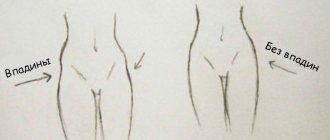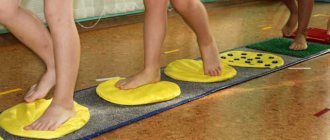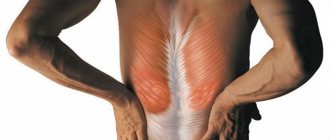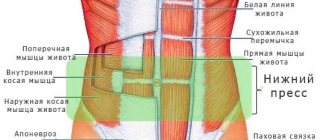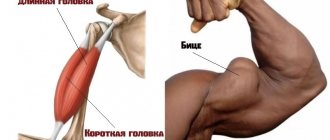The foot is the distant part of the lower extremities that serves as support while walking, running or standing. It has a movable vaulted structure that performs a shock-absorbing function. People suffering from flat feet and other metatarsal deformities are recommended to do exercises aimed at restoring the shape of the arch. But before you increase the lift of your foot, you should definitely familiarize yourself with the rules of the training. Compliance with the technique guarantees the absence of injuries and overstrain of the muscles of the foot and lower leg.
Anatomy of the foot
The lowest section of the legs is an arch, which is a support when moving. The sole is the part that is in contact with the floor, and the side opposite to it is called the back. Thanks to flexible joints, the foot has high elasticity.
It includes:
- The tarsus is a large number of bones located between the metatarsus and the bony structures of the lower leg. Between the fibula and tibia and this part of the foot there is a joint called the ankle.
- Phalanges are elongated bones containing terminal (distal), middle and main (proximal) parts.
- The metatarsus is the middle part of the foot, which is located between the toes and the tarsus. Includes five short tubular bones (analogues of the metacarpus on the hand).
The foot contains many muscles that support the metatarsus, provide flexion of the toes and rotation of the sole. The elevation of the arch is influenced by the degree of development of the interosseous muscles.
The height of the arched structure also depends on the tone of the plantar muscles and the presence of deformations in the bone structures.
Rules for selecting shoes and insoles for high arches
Shoes for high arches should be comfortable; choose shoes with impact-resistant soles and shock absorption. Improved shock absorption on the sole will prevent dislocations and ligament tears.
When choosing a model in a regular store, pay attention to the inscriptions “flexible” or “extra padding” on the label; their presence indicates that the option is suitable for you. In specialized stores, consultants will help you choose a shoe option; just describe the problem.
You can insert special insoles into shoes that can absorb shock while walking. Silicone insoles have become popular - they follow the contour of the leg and secure the foot in the shoe. Orthopedic doctors can develop an insole for your foot individually.
Wearing insoles in shoes allows you to rebuild the foot and use inactive muscles. By developing flabby muscles, you can get rid of corns, calluses and debilitating ankle pain. The use of a universal last, made of high-strength plastic, will allow you to adjust the shape of the shoe taking into account the characteristics of the foot.
Determining the height of the arch type
Before developing the instep of the foot, they find out what type it can be classified as. From a medical point of view, high arches are not normal. These patients have problems with foot pronation, which causes the foot to roll outward when walking or running.
How to determine the rise of the foot? You can calculate the height of the arch like this:
- stand on a flat surface without lifting your soles off the floor;
- Without bending your knees, insert your index finger into the middle of your foot.
The test is done first for one leg, and then for the second. The results depend on how far you managed to get your toe under your foot:
- 12-25 mm is normal (no problems with pronation);
- over 25 mm – excessive lifting height (hypopronation);
- less than 12 mm – flat feet (overpronation).
It is not recommended to use the exercises described below if your foot is underpronated.
Treatment
Diseases that cause pain in the instep of the foot are treated with conservative or surgical methods. Depending on the symptoms accompanying the pathology, a set of medications is selected whose effect will be most effective.
For severe autoimmune disorders (rheumatism, arthritis, etc.), cytostatics (Methotrexate, Cyclophosphamide, etc.) and glucocorticosteroids (Prednisolone, Betamethasone, etc.) are prescribed. For diseases of the endocrine system, hormonal medications are indicated.
Pain relief is carried out with the help of non-steroidal anti-inflammatory drugs (Diclofenac, Ibuprofen, Ortofen, etc.) and local agents (Fastum-gel, Indomethacin).
Depending on the severity of the situation, rest or immobilization of the injured limb is recommended before a medical examination.
The therapeutic regimen for treating pain also includes the use of:
- physical therapy;
- foot baths with sea salt, medicinal plant extracts and essential oils.
Foot stretching exercises
Working on the interosseous and plantar muscle tissues helps develop the skeletal muscles of the foot and increase its instep. The effectiveness of training depends on the frequency of training and the correct distribution of load on the distal limbs.
Strengthening the foot muscles with an elastic band
Before performing strength exercises, stretch and warm up the muscles. This way you can prevent injury to your limbs during training. During classes, it is recommended to use an elastic band:
- Sit on the floor and straighten your legs in front of you.
- Place some tape over your toes and top of your foot.
- Without sudden movements, pull the ends of the ribbon towards you, feeling how the calf muscles are stretched.
- Now pull your heels towards you, trying to push the tape out with your fingers.
Pull up your toes
To make your muscles stretch, you can do the following exercise:
- Sit on the floor and straighten your legs in front of you.
- Bend your knees slightly.
- Extend your toes and foot away from you (point position).
- Try to pull your toes towards you as much as possible so that your heels go forward (flex position).
To achieve good results, the exercise to increase the height of the arch of the foot is performed at least 20 times in one approach.
Half toe raise
With a low arch, the risk of injury increases due to excessive loads on the muscle-bone structures of the sole. To strengthen the muscles and increase the arch, it is recommended to do half-toe raises (Relevé).
To maintain balance, you can lean on the back of a chair while performing the exercise. Its essence is to lift the middle part of the foot off the floor so that the tips of the toes remain in place.
Adapted plie
In body ballet and classical dance classes, special attention is paid to training the foot and increasing its elevation. To strengthen the arch, an adapted plie is performed:
- In a standing position, the feet are spread as far apart as possible.
- The toes should be stretched out as much as possible and the leg muscles should be tense.
High arch of the foot - what is it, its disadvantages
It is believed that this foot structure is common in ballet. Strongly raised top of the foot from toes to ankle. The foot does not fit completely into the shoe; the emphasis is on the heel and toes. When the leg gets tired, it begins to twist in pain.
The disadvantages are that the foot does not fit into shoes and boots; it literally rests on the top due to the unnaturally high position of the foot. It's hard to walk in heels. Platform sandals help out, they are not very beautiful, but the foot fits snugly over its entire length and does not get tired.
Pros of high lift:
- looks good;
- provides good stability to the foot;
- excellent shock absorption when running and walking;
- The leg is fixed, does not require support, and does not fly out.
All this is good only if you have found your pair of shoes. Narrow shoes in the girth of a high instep put pressure and do not fit. Unfortunately, the manufacturer sews boots based on the normal instep of the foot, and it is impossible to buy a comfortable thing.
- Arthrosis of the foot - causes, first symptoms and manifestations, diagnosis, treatment with medications and exercises
It is especially difficult if you are overweight, and swelling is added to the high instep and wide legs, which ultimately aggravates walking on the street. In this case, sneakers and comfortable shoes from sports collections come to the rescue. Unfortunately, they cannot be adapted for the office.
Low instep
If shoes for high instep feet are wide, then for low instep feet they are narrow. People with this problem need to wear low-heeled shoes. Boots with ties will provide excellent support. You can wear mid-heeled shoes with a properly fitted last.
For ease of walking, you need to buy shoes with laces and fasteners so that they fit well on your feet and your toes do not fly out of the sandals. If desired, you can sew a model to order.
Prevention of pain:
- take off your shoes more often;
- walk at home and on the beach barefoot, at the same time this will prevent flat feet;
- at work, change the height of the heel if your legs are tired;
- warm up your feet by rotating your legs in different directions;
- wearing boots with arch support.
People with low arches find that the model is not comfortable, falls off the foot, and rubs. We advise you to look for a high-quality, albeit expensive, model. Your feet will feel the difference. Find your shoes and enjoy the easy walk.
Injury Prevention
When performing exercises to lift the arch of the foot, the risk of injury to the muscles and ligaments of the sole, ankle, toes and metatarsal bones increases. To prevent injury, it is recommended to follow the following preventive measures:
- During the first 2-3 workouts, the foot is wrapped in an elastic bandage to prevent sprains.
- It is not advisable to exercise through pain in the leg or ankle.
- It is recommended to start strength exercises only after warming up and stretching the muscles.
- In your free time, it is advisable to wear orthopedic shoes or use special embossed insoles.
Increasing the instep of the foot is advisable only in the case of flattening of the metatarsus and the development of flat feet. It is not recommended to resort to the use of special orthoses and exercises in the absence of deformities in the bones, since raising the arch of the foot can lead to insufficient pronation. Underpronation is most often observed in people who play sports professionally (dancers, ballerinas, runners).
Using special tools
To correct deformities that occur when the metatarsus is flattened, orthopedic devices can be used:
- heel pads,
- finger separation pads,
- instep supports to increase the longitudinal arch,
- correctors for the midsole,
- wedges to correct the angle of the foot.
It is recommended to combine the above orthoses with special exercises that help improve muscle tone and lift the foot. In case of longitudinal or transverse flatfoot, exercises should be supervised by an orthopedist.
We learn how to lift legs to the bar correctly
If you are already an experienced and well-trained athlete, then we advise you to perform hanging leg raises to the bar. This exercise will help you maximally load your abdominal muscles or add additional weight to your regular workout.
We will talk in detail about the technique and all the nuances of performing leg lifts to the crossbar later in the text.
Benefits of exercise
To learn how to lift your legs to the crossbar, you need to well strengthen the muscles of the shoulder girdle and arms, back (especially in the lumbar region), as well as the rectus abdominis muscles, which play a major role in this exercise.
Raising your legs to the bar will provide you with the heaviest load. Easier options are knee raises or leg raises above the horizontal line.
note
When lifting your legs to the bar, the entire rectus abdominis muscle works, but the lower abs are especially well worked out. It is the most difficult to put in order, while the upper cubes begin to visualize quite quickly.
If you simultaneously turn the body to the left or right, the oblique abdominal muscles are well worked out. Leg raises will diversify your workout when regular crunches are already boring and do not have the desired effect.
Are there any contraindications?
There are no contraindications to this exercise if you have not previously had injuries. If you experience any pain or discomfort during the exercise, you can replace leg lifts to the bar with reverse crunches, sitting on the floor or on an inclined bench in the gym.
The correct technique for performing straight leg raises is as follows:
- We start from the starting position - hanging on the crossbar or horizontal bar with straight arms and legs. The tailbone is slightly curled forward so that you can feel the tension in your abs. If your hands are not strong enough and the grip is not enough for a long time, use special clamps to support your hands. The shoulders are at the same level as the ears.
- As you exhale, lift your limbs, touch the bar and twist your pelvis forward. Hold the position for a few seconds.
- As you inhale, slowly lower your legs down and repeat the required number of times. Watch your breathing.
- If you are trying to learn the correct execution or improve your skills, then count only correct repetitions. This will encourage you to stick to proper form and perform repetitions without making mistakes (swaying or not lifting your legs fully).
The photo shows how the exercise of lifting legs to the crossbar looks correctly.
In the initial stages, try to do at least 10-15 repetitions in 2-3 sets. Let us repeat that this exercise is only suitable for well-trained athletes.
For beginners, it is better to start with lifting the limbs bent at the knees while sitting, lying down or hanging on a horizontal bar.
Useful tips from trainers that you need to follow on the bar:
- Don't swing your body. This way you take the load off your abs.
- Be sure to tuck your pelvis.
- Do not raise your hips above 90 degrees.
- Stretch the muscles in the back of your legs. Good stretching will allow you to lift your legs higher and easier and will reduce tension on the tendons.
Watch a training video of a trainer doing leg raises while touching the bar.
Abdominal training and exercises in general will bring the expected results only if performed regularly and together with proper nutrition. Perform leg lifts to the bar until you feel a burning sensation in your abdominal muscles, until failure.
Listen to your body, but don't feel sorry for yourself. Good results can only be achieved with hard work!
Bunion or hallux valgus
No: shoes, shoes and boots with narrow toes and high heels (this will deform the foot even more). Patent leather is not suitable - it almost does not allow air to pass through, which is why the protruding bone can periodically become inflamed.
Yes: Birkenstocks and special orthopedic shoes are ideal, but not a universal option and not accessible to everyone. Elastic moccasins made of soft leather or suede and textile espadrilles can be called comfortable summer shoes for problem feet. It's worth taking a closer look at sandals with elastic straps.
In general, shoes should be soft, not pinch the protruding bone and fit well on the foot. We advise you to purchase orthopedic insoles - and then even from espadrilles, which do not have arch support, you can make shoes for long comfortable walks.
To prevent a long walk from tiring your feet, choose soft moccasins made of genuine leather from the El Tempo shoe and accessories store. These are not only stylish shoes, but also an excellent option for a business look.
El Tempo leather moccasins, from RUB 3,490, order:
+7 (800) 700-53-04
El Tempo leather moccasins, from RUB 3,490, order:
+7 (800) 700-53-04
The foot is the main support when walking and the quality of life and body functions largely depend on its condition. Any deformation changes lead to major health problems and disorders of the musculoskeletal system. Therefore, you should understand what types of feet a person has and how to identify them at home.
Nail fungus on the big toe: symptoms, how and what to treat
The big toe is the most common site of fungal infection. How to cure toenail fungus? The first signs are outwardly subtle, but it is important to identify the pathology as early as possible in order to begin treatment and speed up the recovery process.
What is nail fungus
Three types of fungi parasitize human skin, hair and nails - yeast, mold and dermatophytes. In medicine, the condition of infection with a fungus is given the name onychomycosis.
Without timely treatment, the disease can quickly progress and lead to unpleasant consequences - infection of other parts of the body, penetration of fungal spores into internal organs, and spread of infection to other people.
Causes of fungal infection
Fungal infection can occur directly and indirectly; fungal infection is concentrated in public places where a large number of people are present at the same time.
You can become infected with the fungus on the beach, in the pool, gym, beauty salon, bathhouse or sauna, using objects or belongings of infected family members or strangers, or in contact with contaminated surfaces. If a person is elderly and has a weakened immune system, then the likelihood of infection increases significantly.
Good to know! According to medical statistics, a quarter of the entire population of the planet suffers from fungus in various forms and manifestations, on the skin, hair and nails.
Factors that provoke the occurrence of fungus:
- A state of weakened immunity. A weak immune system may not be able to cope with the attack of pathogenic viruses and bacteria, including harmful fungi, and infection occurs faster.
- Damage to the nail plate. Through microcracks and damage to the extremities, the infection directly enters the body and causes fungus on the big toe.
- Increased sweating of the feet. A humid and hot environment, which is created by excessive sweating of the feet, is suitable for the reproduction and development of fungal spores.
- Insufficient foot care. Taking care of your feet is no less important than taking care of your hands. Hygienic measures - daily washing, thorough drying, use of disinfectants and special cosmetics are important to ensure the comfort and health of the feet.
- Accompanying illnesses. The risk of fungal diseases increases with chronic diseases - diabetes, flat feet, vascular pathologies, psoriasis and eczema of the extremities.
- Inconvenient and poor quality shoes. The material of shoes that are poorly breathable and retain moisture contributes to the appearance and development of fungus, primarily on the big toe. If you frequently wear artificial and tight shoes, your toes may suffer.
Symptoms or how to recognize a fungus
Symptoms of infection in the thumbnail do not appear immediately and are not noticeable at first. Over time, external signs worsen, and infection can occur on other fingers, including the little finger:
- Initial stage. The nail plate loses its natural shine and color, becomes darker and cloudier, and turns yellow. Pathology can begin from the edge of the nail or from the side parts of the plate. The skin on the finger begins to peel off, an unpleasant odor and pain appear. Gradually, the nail becomes porous, its shape and relief change, it thickens and deforms, and may begin to lag behind the nail bed.
- Second stage. It is characterized by increased sweating of the feet, which leads to itching and burning, especially in the area of the big toe and between the toes. The natural shade of the nail changes to brown, sometimes gray and black, and dark spots appear. The nail plate becomes rough and uneven, becomes covered with cracks, can break, peel and crumble.
- Advanced stage. At the third and fourth stages, the mycelium grows into the layers of the epidermis, this leads to severe inflammation and redness, the person is bothered by itching and burning. There is a feeling of discomfort, which increases when putting on dress shoes, and pain while walking. At the extreme stage, the infection covers the entire foot, nails and skin. The surface of the foot becomes covered with blisters, which burst during friction and hurt. A person is no longer able to live and move normally.
The big toe is the first toe to be at risk of contracting onychomycosis, followed by infection that can affect the remaining toes and the skin of the foot.
How and with what to treat fungus
If you notice the first signs of onychomycosis of the nail on your big toe, you should contact a hospital - a mycologist or dermatologist. The duration and regimen of treatment depend on the stage and degree of neglect of the fungal disease. To determine the type of fungus, the doctor may prescribe special tests - scraping, culture, and in exceptional cases DNA diagnostics is used.
How to treat fungus:
- Systemically. Treatment for toenail fungus involves taking capsules and tablets prescribed by a dermatologist as an adjunct to topical topical therapy. Medicines are divided into two groups - azoles and allylamines, which kill many types of fungus, including the rarest and most complex ones. Drug treatment can last for several months in a row, up to six months and a year.
- Locally. The most popular way to treat nail fungus on the big toe is a special varnish that can be applied under a decorative coating. The varnish contains antibacterial substances that effectively eliminate fungus and promote rapid recovery. Special ointments, creams and gels are widely used.
- Folk remedies. Traditional medicine recipes are widely used to eliminate fungal infections on nails. The most popular of them are: iodine, lemon, sea salt, vinegar, soda, medicinal herbs. Traditional methods are effective as a complement to the main treatment prescribed by a doctor.
- Laser therapy. The fungus can be easily and quickly treated with laser. For this, several sessions are enough - from 2 to 5, depending on the stage and external signs. The advantages of the modern technique are obvious - safety, painlessness and effectiveness, quick results and high quality of treatment. If necessary, a specialist can carry out partial stripping of the nail plate, preserving the healthy part of the nail.
- Surgical treatment of the nail. The intervention of a surgeon becomes necessary in extreme and advanced cases when it is necessary to remove the nail plate due to ingrowth, detachment and inflammation. After this, complete recovery occurs and a new nail grows on the finger. The operation is performed by a surgeon in a hospital setting under local anesthesia.
If the infection has affected not only the nail, but also the surrounding tissues - the skin of the fingers and toes, then therapy is carried out using medicinal ointments, gels and creams. The treatment is long-term, treatment is carried out several times a day.
Basics and rules of treatment
The unnoticed and rapid spread of a fungal infection leads to pathology of the deep tissues of the nail plate. Antifungal ointments and creams are effective only on the outer surface of the nail, as they cannot penetrate underneath it.
Oral medications are toxic and have a depressing effect on the immune system; traditional medicine requires too long and frequent exposure. Physiotherapy procedures are expensive, but effective and quick to achieve a positive result.
Important! The regimen and drug should be prescribed by a dermatologist, based on the type of infection, which is detected through special analyzes and tests. Science knows several dozen fungal bacteria that parasitize the surface of the human body.
Self-medication errors can manifest as deterioration in the condition of the nails, the possibility of widespread spread of the disease and infection of surrounding people. Each drug has a destructive effect on a specific type of fungal infection.
Often traditional drugs - ointments, varnishes and plasters - are not enough, the mycelium continues to develop and progress in the body. Pregnant women and children should take antifungal medications with extreme caution.
Treatment of fungus in pregnant women and children
Toenail fungus can be a childhood problem. If the first symptoms are detected, you should urgently take the child to a dermatologist. The specialist will prescribe the necessary studies and give a treatment regimen, including means for external and internal effects, and introduce mandatory preventive measures.
In the early stages, applying patches or varnishes will be sufficient to get rid of the fungal infection. The disease in an advanced stage requires more serious treatment - surgical interventions, oral medications and physiotherapeutic procedures.
It is important to know! Nail fungus in children is a signal of decreased immunity. A child with a fungal infection urgently needs to strengthen the immune system with the help of vitamins, nutrition, hardening procedures and physical education.
Pregnant women are at risk for developing nail fungus. Their immunity is weakened, which increases the likelihood of infection. In this case, traditional treatment is not suitable; special drugs are needed, first of all, safe for the fetus.
External remedies - varnishes, patches and creams - will help slow down the course of the disease; the main treatment should be postponed until after delivery and the end of lactation.
Rules and methods of prevention
The nail plate affected by the fungus is modified, bent and deformed, and it can grow in the wrong direction and cut into the skin, causing swelling and inflammation of the surrounding tissues.
Without appropriate treatment and hygiene, an infectious process can begin, which is especially dangerous for diabetics and the elderly. Complications of onychomycosis can include trophic ulcers and gangrene of the extremities.
During treatment, the following requirements must be observed:
- In parallel with therapeutic antifungal therapy, concomitant diseases should be treated, and chronic ones should be maintained in remission, avoiding exacerbations.
- Follow the hygiene plan, do not forget about cleanliness, take care of your feet and nails daily, do a pedicure and use special products.
- Proper selection of shoes is an effective prevention of nail fungus. You should always wear socks in closed shoes, and only wear open ones with high heels occasionally.
Attention! Maintaining hygiene is the key to preventing the spread of infection throughout the body and to family members, including the elderly and children. The source of infection must be excluded from contact so that fungal spores cannot be transferred to other things and objects.
Prevention measures:
- use only personal hygiene items for individual use;
- if hyperhidrosis occurs, characterized by excessive sweating, then it should be treated and special antiseptics should be used;
- measures to strengthen immunity;
- maintaining a healthy lifestyle, nutritious nutrition;
- It is not recommended to overuse pedicures, as this thins the nail plate and disrupts the integrity of the skin, which leads to infection;
- shoe fitting in a store should be on heels or socks;
- wearing high-quality, breathable shoes of a suitable size and with insoles made primarily from natural fabrics.
It is important to remember that a fungal infection never goes away on its own; it requires complex and long-term treatment. Onychomycosis is contagious to others, children and adults, the disease is fraught with discomfort and complications.
During their life, fungi release toxins that are extremely harmful and dangerous to the body. Intoxication is fraught with a deterioration in well-being and mood, threatening the occurrence of headaches, a state of fatigue and apathy, and a decrease in a person’s performance and activity. The only way out of the situation is to treat the fungus correctly and until complete recovery!
Foot size 40
No: ballet flats, moccasins, slip-ons, babouches, sleepers, sandals - any flat-soled shoes will turn a long foot into a ski
Ornate shoes and T-strap sandals are also not recommended: they attract attention and add several dimensions. Instead of platform shoes, it is better to choose wedges
Yes: any shoes with a heel height of 5 cm or more visually shorten the foot. Pumps and slingbacks - only with a rounded toe, not a pointed one. Ideal if it is also contrasting in color or texture. Sandals with several cross straps of medium width look good. You can try loafers with the highest heels. A win-win option is shoes in beige or brown: they are not so conspicuous.
For girls with larger feet, we recommend sandals with cross straps from Corsocomo. Italian design shoes are made of leather and suede and have a stable heel.
Corsocomo suede sandals, RUB 7,600. with a 30% discount, order:
Corsocomo leather sandals, RUB 7,600. with a 30% discount, order:
Full calves
No: sandals and any other shoes with thin straps and small details are undesirable - this will only increase the contrast with full calves. A categorical “no” to gladiators and ankle boots. It is not advisable to wear boots that end more than three toes above the ankle (they shorten the legs) and boots whose top top falls on the widest part of the calf.
Yes: sandals and boots with chunky soles and shoes with stable heels will visually balance the proportions between full calves and feet. Cowboy boots just above mid-calf will do. Black ankle boots, pumps, oxfords, loafers in combination with thick black tights or trousers will elongate the silhouette. T-strap shoes and sandals are ideal.
Sandals with chunky soles are suitable for those with full calves, and they are now at the peak of popularity. Find your sandal model in the Corsocomo shoe and accessories store!
Why is high arch dangerous?
A high instep is an anomaly with which it is difficult to choose a boot, shoes, or wear heels. With reduced pronation, the sole does not bend enough to protect internal organs from shocks and joints from fractures when running. With overpronation, the foot muscles are in a relaxed state, cannot perform their function, and bend more than necessary. The load on the knees, hip joint, and back increases.
People with low pronation are characterized by an abnormal gait and curvature of the knee joint. People with high arches often have calluses near the big toe and little toe, there is pain in the arch of the foot, and the limb is characterized by stiffness, which is fraught with fractures and dislocations. Ligament sprains are often observed even without physical activity. A high instep creates a claw-like shape of the toes, they bend, and this makes even special orthopedic shoes uncomfortable.
To prevent adverse consequences and not aggravate the deformity, begin treatment in childhood, while the bone is not formed. At an early stage, the deformity can be corrected with physiotherapy, massages, and physical therapy.
Live broadcast Hello everyone! Please tell me what shoes to buy for a child and where?! . Questions and answers Baby hat baby magazine What size clothes should I buy for a newborn? baby magazine Let's keep our feet warm: how to sew fur booties for a baby from birth to one year Live I just handed over my boots, let's go look at others. with a high and low instep, my daughter’s heel is not... Questions and answers Jumpsuit from Sobyanin Library How to hide leg imperfections Questions and answers Survey of young mothers)))
Hello! There are many people who have high arches, see picture:
There is nothing good and nothing bad in this, nature ordered it that way. Maybe it was passed down to you genetically from your ancestors; it may be because you played a particular sport that caused your foot to change. But the essence is the same - this is a “high rise” and there is no getting around it...
To formulate the question simply, then, in terms of length, your foot is size 41, and in terms of the instep, you can only wear shoes of size 42 or even 43 on your foot (2 sizes larger than the natural length of the foot). Yes, it happens, this happens...
Our clients often call or write to us before ordering shoes and indicate their problem: 1). I have a high instep, so how about whether your shoes will suit me? 2) Or, “you know, my husband has wide feet and it’s difficult for us to find shoes for him in a regular store, can you help?”; 3) Also, people often come to us with questions about hallux valgus (a strongly protruding bone of the big toe).
We have been working purely in this direction since 2012 (we do not focus on all segments at once, only men’s and only lift shoes...), and we have encountered all sorts of issues, both those indicated above and many others. . We are probably the only site that can confidently say and prove that we are professionals in the niche that we have been engaged in for so many years. The thing is that it’s one thing when you just answer letters or calls “if only they bought it, if only they ordered something”, yes, that will do, of course, 100 pairs of these have already been sold” or “yes, a package will come to you for 10 days, of course we’ll make it,” these are all “fly-by-night” sites that have proliferated in large numbers on the Internet, deceivers who do not keep their promises.
Another important point is that we ourselves conduct experiments with the shoes we sell, and before loudly declaring anything, we conduct our own tests in order to be sure of what we are telling the client. Using our own experience, our own experiments, we first check everything, and when we are firmly convinced that we are right, we can confirm this to our customer.
Since 2012, the year we began our work, more than 2000 pairs have been sold, many different shoes have passed through our hands. We also experimented with “high arches” to make sure that these shoes were designed with this factor in mind, we tested the shoes for wide feet, whether they would fit or not, whether we could sell them. We looked at the shoes that were put on a person with hallux valgus. We tested men's shoes in very small sizes, from 36... All these points were carefully studied and worked out, through our personal experience, we tested the shoes that we sell, that we wear ourselves, making sure of their quality.
We are practitioners, and since 2012 we have been working on these shoes - elevator shoes.
men's shoes to increase height;
Phone / WhatsApp / Viber +7 (988) 245-25-00
